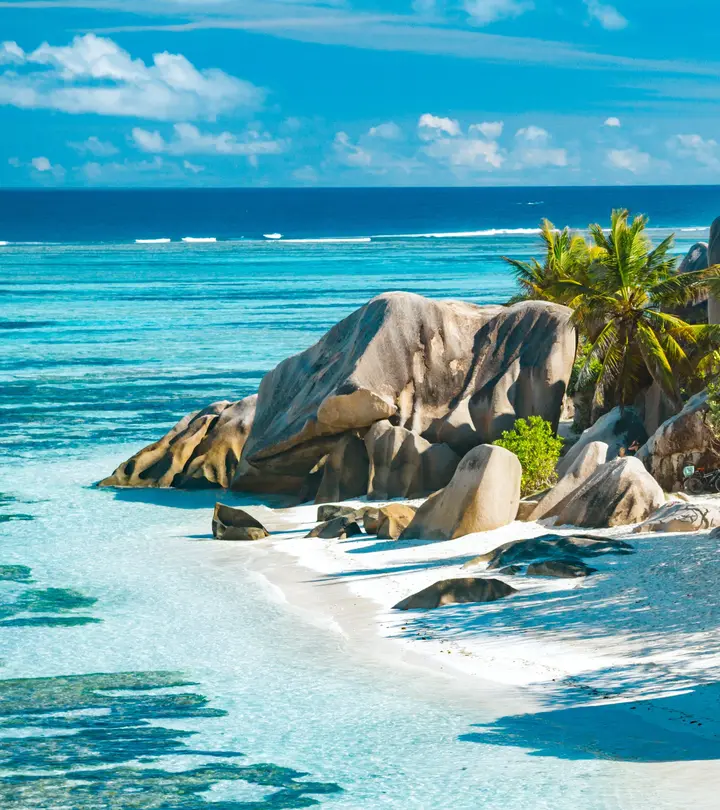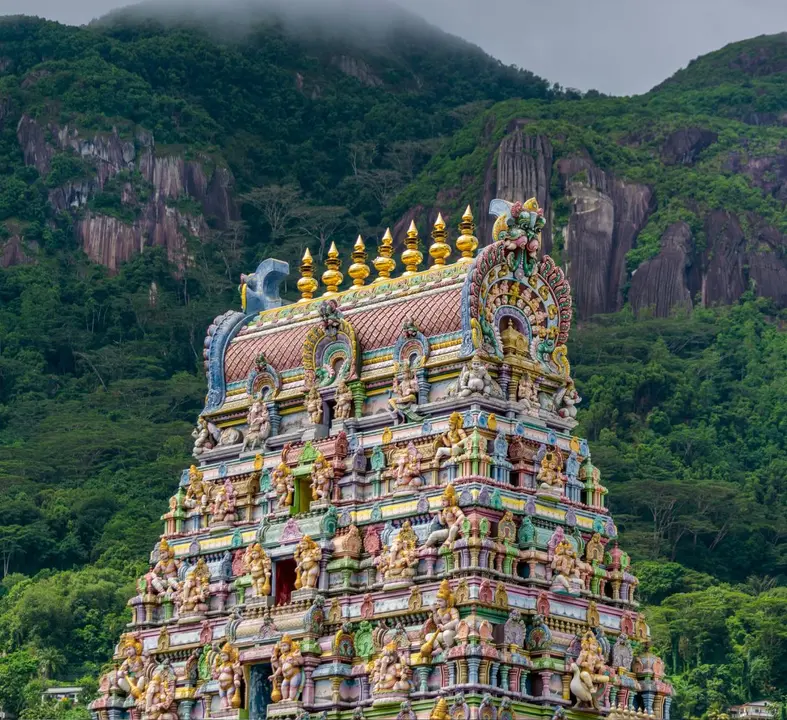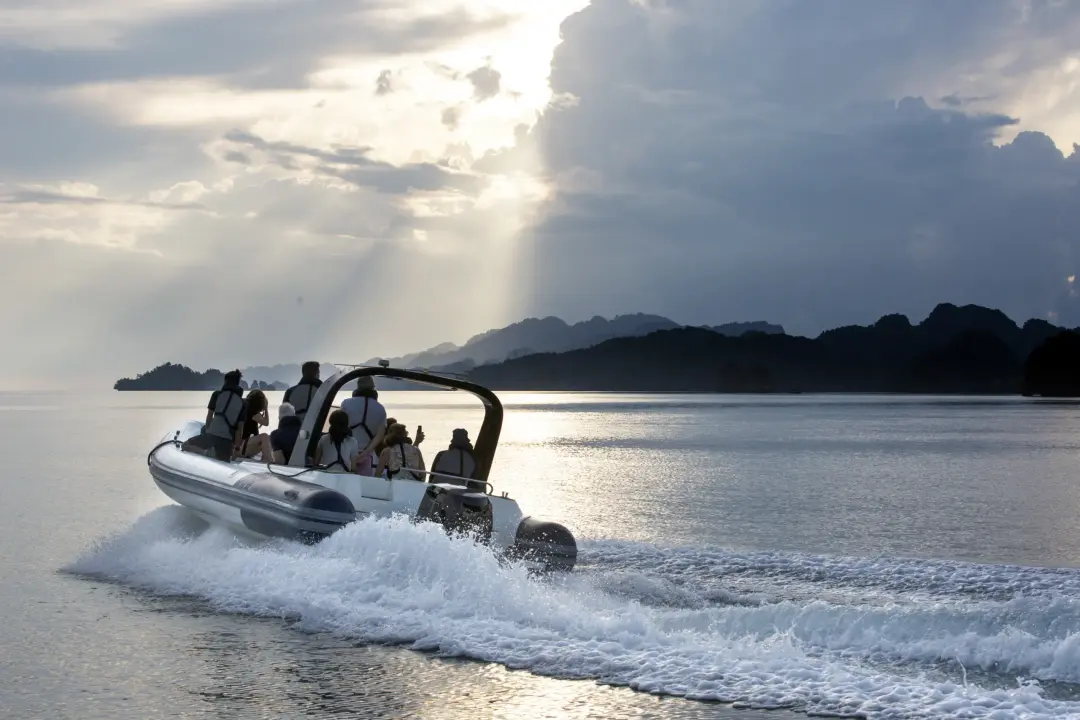
Seychelles Uncovered: Discovering a Hidden Eden
8 April 2025 | Seychelles & Tanzania
Scattered like jewels across the cast expanse of the Indian Ocean, the Seychelles archipelago is a stunning collection of 115 islands, each boasting breathtaking landscapes and a cornucopia of endemic flora and fauna – from the iconic Coco de Mer, to the Aldabra Giant Tortoise. Known for its pristine white beaches, warm emerald waters, and lush tropical forests, this remote paradise has some of the most ecologically rich landscapes in the world.
Read on as we explore the fascinating geography of Seychelles, uncovering the natural wonders that make this Indian Ocean paradise truly one of a kind.





Where is the Seychelles?
Seychelles is an archipelago located off the eastern coast of Africa in the Indian Ocean. It sits approximately 1,600 kilometers (994 miles) east of mainland Africa, with Madagascar as its closest neighbor to the southwest. As mentioned, the country consists of 115 islands scattered across an area of about 1.37 million square kilometers, or 529,000 square miles. This makes the Seychelles one of the world’s most dispersed nations in terms of land area.
Despite its seclusion, the Seychelles has long been a crucial maritime hub, attracting explorers, traders, and settlers from Europe, Africa, and Asia. The islands were first sighted by Arab traders and later visited by Portuguese explorers in the 16th century. However, it was the French who formally claimed Seychelles in 1756, followed by British rule in the early 19th century. Seychelles gained independence in 1976, becoming a sovereign nation while maintaining close ties with and retaining both its African and European influences.
How Big is the Seychelles?
Although Seychelles is an extensive island chain, its total land area is relatively small, covering just 459 square kilometers, or 177 square miles of land, making it one of the smallest countries in Africa. However, its true scale extends beyond its landmass – the Seychelles’ surrounding waters are vast and serves as a vital resource. The country’s surrounding waters provides not only a rich habitat for a myriad of marine species, it supports the country’s tourism and fishing industries that employ more than a third of the country’s workforce. Recognizing the importance of its marine ecosystems, the Seychelles took a major step in 2020, by designating 30% of its coastal waters (a whopping 410,000 square kilometers) as protected areas, ensuring the preservation of marine life and the sustainable use of ocean resources.
As for the islands themselves, they can be categorized into two groups: the granitic inner islands and the coralline outer islands. Characterized by granitic rock formations, dense forests, and stunning beaches, the inner islands are some of the oldest and most popular of the archipelago, and includes the islands of Mahe, Praslin, and La Digue. The coralline outer islands, in comparison, are more remote, lower-lying, and composed primarily of raised coral and sand. The coralline Seychelles feature Aldabra and Alphonse, both being important sanctuaries for rare animal and bird species such as the eponymous Aldabra Giant Tortoise, and the migratory Sociable lapwing.
What is the Capital of Seychelles?
The capital of the Seychelles is Victoria, located on the northeastern coast of Mahe, the Seychelles’ largest and most populated island. Despite being one of the smallest capitals in the world, Victoria is the heart of the Seychelles’ government, commerce, and culture. Originally established as the seat of the British colonial government, Victoria City hosts key government institutions, including the State House, which is the President’s office. Port Victoria is another key hallmark of the city, facilitating the export of goods such as coconuts, fish, vanilla, and guano – a highly effective natural fertilizer made from the dried-up excrement of birds and bats.
The city reflects the country’s diverse heritage, with Creole, French, British, and Indian influences visible in its architecture. The colonial-era Victoria Clock Tower, often affectionately referred to as the “Little Big Ben”, is an example of this. Other landmarks such as the Sir Selwyn Selwyn-Clarke Market, Seychelles National Botanical Gardens, and the Arul Mihu Navasakthi Vinayagar Temple, paints Victoria as the perfect introduction to the Seychelles’ history and culture.

Seychelles’ Beaches
The Seychelles archipelago boasts an incredible array of distinctive beaches, each offering its own unique allure. Anse Lazio on Praslin Island is renowned for its expansive golden sands and clear turquoise waters, framed by imposing granite boulders. This idyllic setting provides excellent conditions for swimming and snorkeling, allowing visitors to explore vibrant marine life just offshore.
On La Digue Island, Anse Source d'Argent captivates with its shallow, crystal-clear waters and striking, pink-tinged granite formations. These unique features have earned it the title of one of the most photographed beaches globally. Additionally, its calm, shallow waters make it particularly suitable for families and less experienced swimmers.
Over on Mahé Island, Beau Vallon offers a lively atmosphere with its wide sandy shoreline and gentle waves. The area is also dotted with various dining options, making it an excellent spot to enjoy local cuisine while watching the sunset. Alternatively, for those seeking seclusion, Anse Georgette on Praslin Island remains untouched and pristine, thanks to conservation efforts that limit access and preserve its natural beauty. Similarly, Anse Cocos on La Digue offers a tranquil retreat, accessible via a scenic hike through lush vegetation, rewarding visitors with its serene environment and natural beauty.
Climate in the Seychelles
The Seychelles is known to many as the “Land of Perpetual Summer”. With a tropical climate, warm temperatures, and high humidity throughout the year, it’s hard to disagree with this fact. Due to its location near the equator, the archipelago experiences little variation in temperature, averaging between 28°C to 31°C (82°F to 88°F) all year round. The refreshing trade winds along the coast, however, provides a welcome relief, helping to temper the warmth.
Despite the absence of the usual four seasons, the Seychelles experiences two distinct climate patterns, categorized by the northwest and southeast monsoons. The northwest monsoon, which lasts from December to March, brings warmer temperatures and higher humidity, while the southeast monsoon season, from May to October, is cooler and drier due to stronger trade winds. The transition months of April and October offer calm conditions, making them ideal for underwater activities.
Rainfall is relatively steady throughout the year, with the wettest months typically falling between December and February. However, showers usually come in short, heavy bursts, which are immediately followed by clear skies. While extreme weather is rare, occasional storms and tropical cyclones may occur from December to March.
Thanks to its warm and pleasant climate year-round, the Seychelles is a great destination regardless of the time of year. Those looking to escape the European winter will find December to March ideal for enjoying the Seychelles’ sunny beaches. April and November, though hot and windless, offer exceptional underwater visibility for diving and snorkeling. Conversely, in the months of May to October, the trade winds provide a refreshing breeze, making this the perfect time for sailing, hiking, and other outdoor activities.
Seychelles is more than just a luxury getaway—its diverse geography, rich history, and stunning natural beauty make it a true gem of the Indian Ocean. From its remote yet strategic location off the East African coast to its unique granite formations and breathtaking beaches, this island nation continues to captivate travelers from around the world. Whether you're basking on its sun-kissed shores, exploring its vibrant marine life, or learning about its cultural heritage, Seychelles promises an unforgettable experience for all who visit.
Click here or contact our Expedition Consultants to find out more about the land of perpetual summer.







